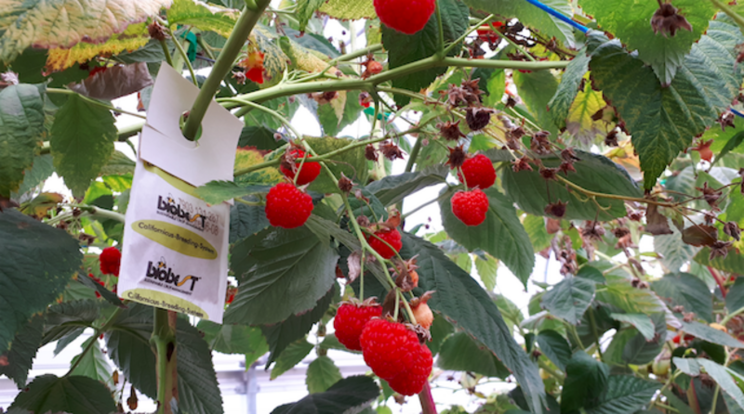Protect raspberry plants preventively against spider mite
Added on 28 March 2022

As the name implies, the californicus predatory mites are supplied in sachets containing feed, enabling the predatory mites to multiply. This ensures predators are released gradually, over a six-week period, providing plants with protection from these first spider mites. "Growers can easily attach the sachets to the crop via inbuilt hooks," says Gaby. "As standard, we recommend hanging one sachet every two metres in the crop." This predatory mite is also available as sprinkle material (Californicus-System)."
Phytoseiulus-System targets hotspots
Later in the season, as temperatures rise, two spotted spider mite hotspots often develop in the crops. "At this point, the control programme needs to be strengthened," says Gaby. "We recommend the addition of our Phytoseiulus-System - effective at temperatures above 15°C."
"A highly voracious predatory mite, Phytoseiulus persimilis tackles spider mite hotspots. We recommend making introductions at a rate of 15 to 20 mites per metre. This predator is striking red in colour and a real spider mite specialist - Phytoseiulus cannot survive without spider mites."
Bumblebees to optimise pollination
Gaby has another tip for raspberry growers - this time in regard to pollination.
"During April, raspberries grown in tunnels start to flower. At this time, days are often still cold and dark causing challenges in regard to pollination. However, these can be addressed by deploying bumblebees. Our Multi-Hives contain three bumblebee colonies packed in a weatherproof polystyrene box. This 'jacket' is also available for individual hives under the name Bee-Coat. This provides valuable protection to ensure the bumblebees can do their job optimally."
Want to know more about spider mite control and pollination in raspberry cultivation? Please contact your Biobest advisor.
This video shows how to use the Bee-Coat: https://www.youtube.com/watch?v=q4NyE6tmgWM
Source: HortiBiz
More news















